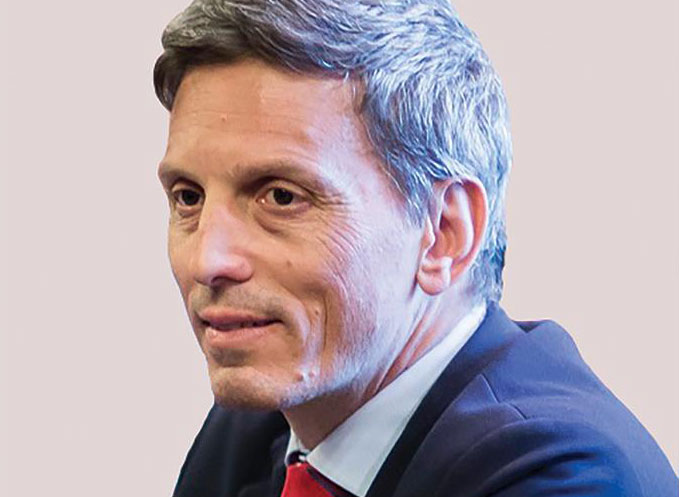
Mr. Andres Isaza
PV: Dear Sir, according to the Memorandum of Understanding signed one year ago, GE would cooperate with the Government of Vietnam to develop at least 1,000 MW of wind power by the year 2025. How has it been realized and what the biggest challenge have you faced in realizing this target, Sir?
Mr. Andres Isaza: According to the Memorandum of Understanding, the Government of Vietnam should publish a Power Purchase Agreement (PPA) sample, in which feed – in – tariff (FIT) will be clearly stipulated. As soon as the FIT is visibly specified, banks, investors and interested organizations will decide to make their investments. We are working with the Government of Vietnam in publishing this PPA with a FIT to be obviously stipulated. Upon such publication, realization of the target that you mention above will no longer be a big challenge.
PV: What is the most important content in the PPA?
Mr. Andres Isaza: Investors will pay much attention to the feed – in – tariff in the PPA. However, it will not be as important as the timeframe within that the Government undertakes to purchase electricity at the FIT. Having this information, investors will do financial analysis to determine the profitability of their projects before they make any investment decisions. At present, GE is involved by relevant bodies of the Government of Vietnam to compose this Agreement. We believe that the target of 1000 MW will be reachable.
PV: Another concern of renewable energy development is grid connection or whether the power grid can respond to intermittent renewable energy generation. For the time being, whether the power grid of Vietnam can respond to renewable energy generation, Sir?
Mr. Andres Isaza: Yes, grid connection is the most important issue. Not a few countries made mistakes when constructing many wind farms, then realizing that their existing power grids were not adequate to respond to these wind farms.
We have discussed with Vietnam Electricity (EVN) about the importance of power grid strengthening. Construction of wind farms makes sense only when a compatible power grid is in place. The point here is upgrading of a power grid will take much time, meanwhile development of renewable energy sources such as wind power or solar energy will take a certain initial time but once it starts, renewable energy capacity can grow rapidly.
Therefore, we are concerned that there will be a gap between the pace of wind or solar power development and the pace of corresponding power system expansion. We encourage EVN to focus more on the power grid so that when the PPA is made available, the power grid can be well prepared to integrate wind power. A good power grid is a cornerstone for sustainable development of renewable energy in Vietnam.
PV: It seems that renewable energy requires large investments in not only generation facilities but also power grid. Some investors said that the present FIT (US cent 7.8 / kWh) is not attractive enough. So what do you think about the competitiveness of renewable energy?
Mr. Andres Isaza: During the past 10 years, investment cost of renewable energy sources has decreased by 6% on average per year. As a result, it can be assured that renewable energy is both competitive and sustainable.
In many countries in Europe, Latin America, Middle East and South East Asia, governments support renewable energy development by subsidization. This situation will end when renewable energy develops to a certain scale, when renewable energy is viable without being subsidized. We have seen this happening in many countries over the last 10 years and at present, more and more large scale projects start generating electricity.
FIT depends on natural conditions in each country and each region, since a reasonable level of FIT in one country may not be reasonable in another country.
PV: In addition to FIT, finance is also a challenge to investors. Government of President Donald Trump has changed US policies relating to climate change. GE is an US company, so does this change lead to financial challenges to green energy projects that GE has been involved in the world, including projects in Vietnam?
Mr. Andres Isaza: In USA, renewable energy has gained a lot of success without subsidizations or preferential treatments.
Regarding financial arrangements, we borrow funds from financial institutions all over the world to support Vietnam, so we are not very dependent on the US policies. Whatever the US policies will not affect what we can do in Vietnam.
evn.com.vn
Share